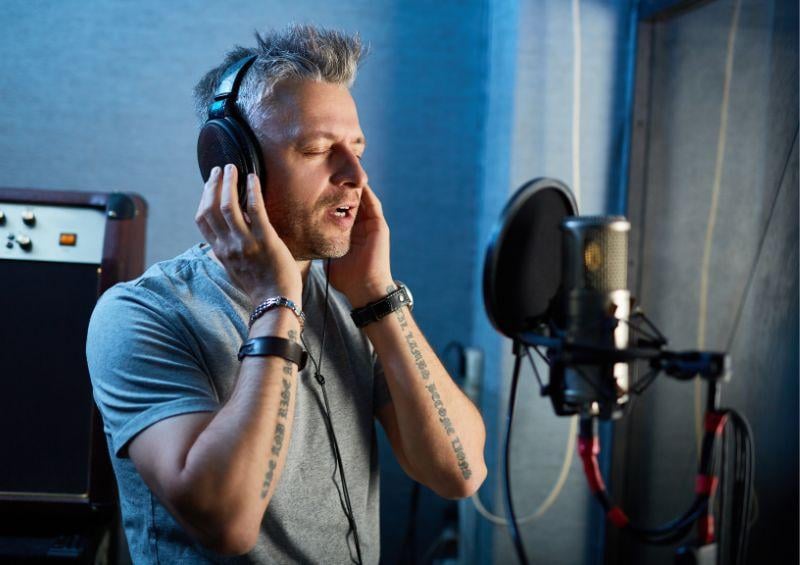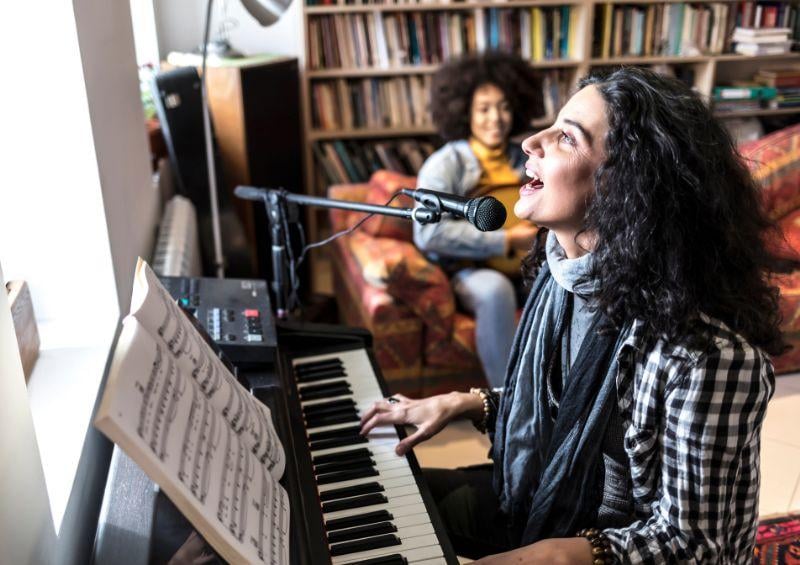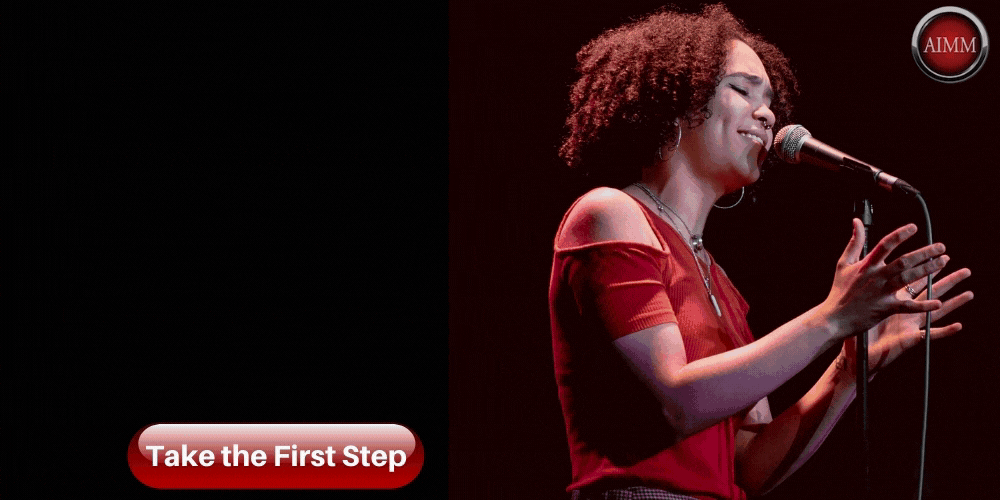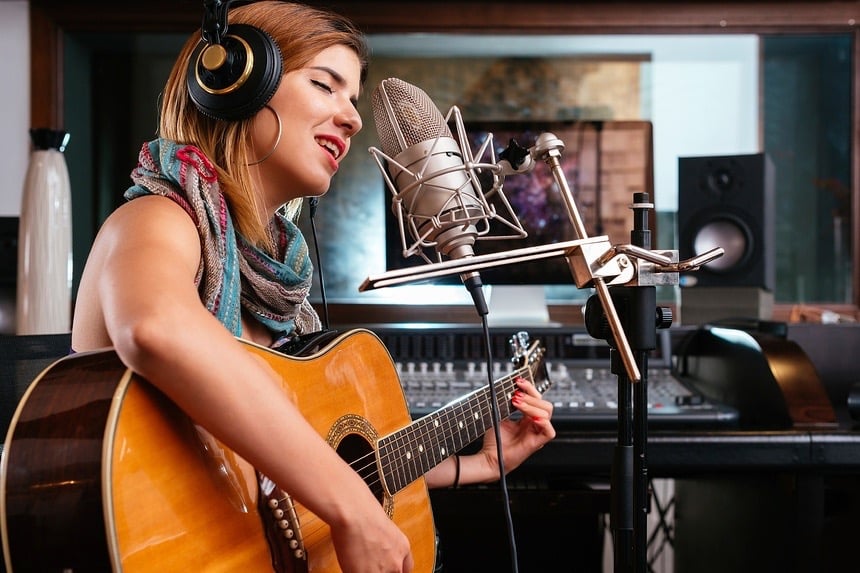As a singer, finding your vocal range is one of the most important things you can do for your career.
Learning your vocal range will also allow you to know your voice type, learn your weak spots, measure your progress in voice training, and choose the right songs for your voice.
Also, if you eventually want to expand your vocal range, understanding your current range gives you a starting point.
Let's begin!
Table of Contents:
- What Is A Vocal Range?
- Why You Should Find Your Vocal Range
- The Major Vocal Ranges and Voice Types
- How To Find Your Lowest Note
- How to Find Your Highest Note
- Take Your Singing Talents to the Next Level
What is a Vocal Range?
Your vocal range is the scope of notes from the lowest note to the highest note that you can comfortably sing in your chest voice.
The notes in your vocal range must be fully projected and not sung via falsetto or your head voice.
Different vocal ranges are described as vocal types. The various vocal types are soprano, alto, tenor, baritone, and bass.
The center of your vocal range is a tessitura.
That's the set of notes that you can reliably project following a vocal warm-up. These are the notes that you can confidently belt.
Vocalists may feel comfortable singing notably low or high notes within their range, but if they can't belt them out at maximum volume, they are not within their tessitura or natural range.
Why You Should Find Your Vocal Range

The best reason to know your vocal range and voice type is so you can pick songs that suit your voice.
When you're looking for a song to sing, you first ask how many octaves you can sing.
If you know your range, it will be easy to determine whether that song would be good for you or if you should do one that's a bit lower.
Knowing your vocal range can also give you an idea about what famous singers to listen to for inspiration.
People with a lower range can emulate Johnny Cash. Those with a higher range might relate to Beyonce or Freddie Mercury.
If you're right in the middle, you might be on the Billie Eilish bandwagon.
The Major Vocal Ranges and Voice Types
Voice teachers teach seven major voice types or voice classifications.
Soprano
The soprano voice range is relatively high compared to the female voice.
The classic soprano range begins around C4 and extends to A5, but professional sopranos can sing a broader range when asked.
The soprano vocal range has multiple subcategories.
These vocal categories include the coloratura soprano specializing in operatic singing and the sopranino who can sing extremely high notes, sometimes up to F6, more than two octaves above middle C.
Sopranos typically sing the lead melody in traditional choral music.
Mezzo-soprano
A mezzo-soprano voice is the mid-range of female voice types.
It runs from A3 to G5, with many mezzo-sopranos able to push those boundaries in either direction.
Alto
Alto is the low range for a female singer. Some male voices naturally slot as altos. Trained altos can sing from G3 in their lower range to E5 in their upper range.
A true contralto sings even lower than a traditional alto singer.
Tenor
Tenor is a common voice type in the higher range of a traditional male voice. Tenors have a typical range of C3 on the low end to A4 on the high end.
The highest male singing voice is called countertenor.
Baritone
A baritone singer's voice goes lower than a tenor's. It typically sits between A2 and A5. However, some baritones can hit a C5, giving them a similar range to a low tenor.
Baritones are the midrange among male singers.
Bass
The lowest male standard voice type is called bass.
Singers with bass voices can hit notes from E2 to C4, but some can hit even lower notes on sustained vowel sounds.
Treble
The treble vocal range applies to children who haven't gone through puberty. Treble singers have a comfortable range between A3 and A5, putting them in a similar range to a mezzo-soprano.
How to Find Your Lowest Note

Start with a simple exercise to find the lowest note you can sing to find your vocal range.
Find middle C (C4) on the piano and sing a consistent vowel sound like "ah," "ee," or "oo," matching your voice to the C4 note.
Now, go down all white keys and sing to each note until you reach the lowest recognizable pitch you can sustain.
The last note you can sing comfortably without croaking or breathing is your low note.
How to Find Your Highest Note
The next step is to find the highest note you can sing using the same method.
Now, sing upwards from middle C on a consistent vowel sound until you reach the highest note you can comfortably sing.
As you move up in pitch, there will be notes that are hard to sing, causing cracking or croaking.
These transitions are your passaggio or "break" points.
Rise in pitch through these parts of your range until you hit your highest comfortable note.
You should be able to sustain that note at a consistent, recognizable pitch. And don't strain your voice.
Let your voice stretch with training and practice.
Your current range may not hit that money note yet, but you can get there.
Take Your Singing Talents to the Next Level

You now have a better understanding of vocal range, vocal classifications, and how to find your own range.
So, now what?
Well, you could use this information to build the perfect sing-a-long playlist on your next road trip.
Or, if you're passionate and you envision yourself as a professional singer, you can utilize this information to develop your craft and hone your skills.
One of the best ways to fast-track your career as a professional and become an above-average singer and a well-compensated singer is to attend an accredited music college like The Atlanta Institute of Music and Media.
AIMM has two vocal training programs that will help you expand your singing range, perfect your pitch, and completely master your singing abilities.
Plus, our Music and Technology Associate Degree: Vocal Concentration gives you an additional skill boost by teaching you how to track, mix, and master music like your favorite famous singers.
Combining music production with professional singing courses will essentially make you the ultimate musician in the music industry's current landscape.
So, what are you waiting for? Why wouldn't you put yourself in the best position to become a professional singer?
You know the path - all you have to do is get started! Click below to begin your enrollment at AIMM today.













